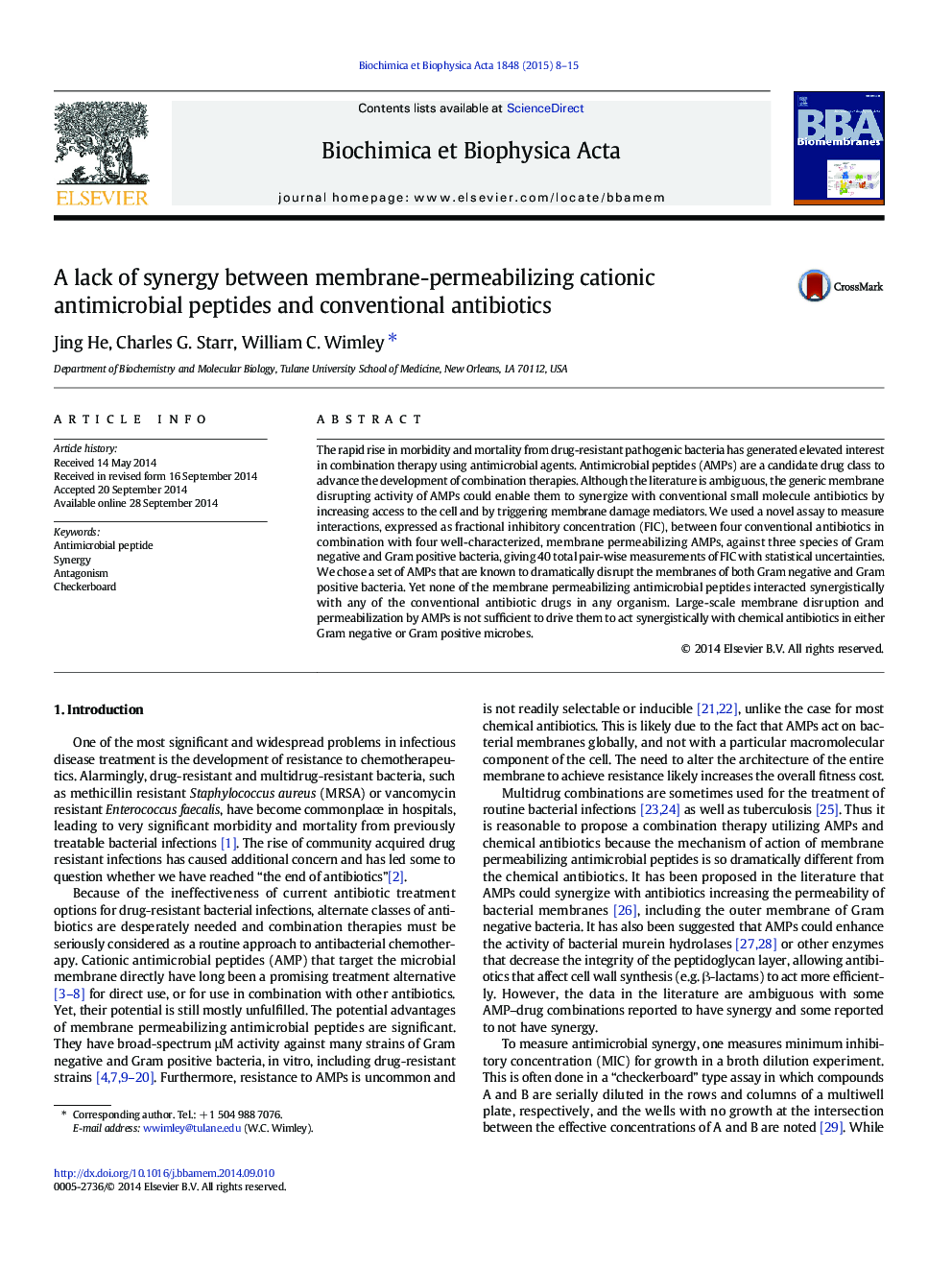| Article ID | Journal | Published Year | Pages | File Type |
|---|---|---|---|---|
| 1944127 | Biochimica et Biophysica Acta (BBA) - Biomembranes | 2015 | 8 Pages |
•Membrane permeabilizing antimicrobial peptides could synergize with antibiotics.•Commonly used checkerboard assay for synergy is not statistically robust.•A novel assay provides robust quantitation of synergy.•A set of membrane permeabilizing peptides does not act synergistically with antibiotics.
The rapid rise in morbidity and mortality from drug-resistant pathogenic bacteria has generated elevated interest in combination therapy using antimicrobial agents. Antimicrobial peptides (AMPs) are a candidate drug class to advance the development of combination therapies. Although the literature is ambiguous, the generic membrane disrupting activity of AMPs could enable them to synergize with conventional small molecule antibiotics by increasing access to the cell and by triggering membrane damage mediators. We used a novel assay to measure interactions, expressed as fractional inhibitory concentration (FIC), between four conventional antibiotics in combination with four well-characterized, membrane permeabilizing AMPs, against three species of Gram negative and Gram positive bacteria, giving 40 total pair-wise measurements of FIC with statistical uncertainties. We chose a set of AMPs that are known to dramatically disrupt the membranes of both Gram negative and Gram positive bacteria. Yet none of the membrane permeabilizing antimicrobial peptides interacted synergistically with any of the conventional antibiotic drugs in any organism. Large-scale membrane disruption and permeabilization by AMPs is not sufficient to drive them to act synergistically with chemical antibiotics in either Gram negative or Gram positive microbes.
Graphical abstractFigure optionsDownload full-size imageDownload high-quality image (472 K)Download as PowerPoint slide
